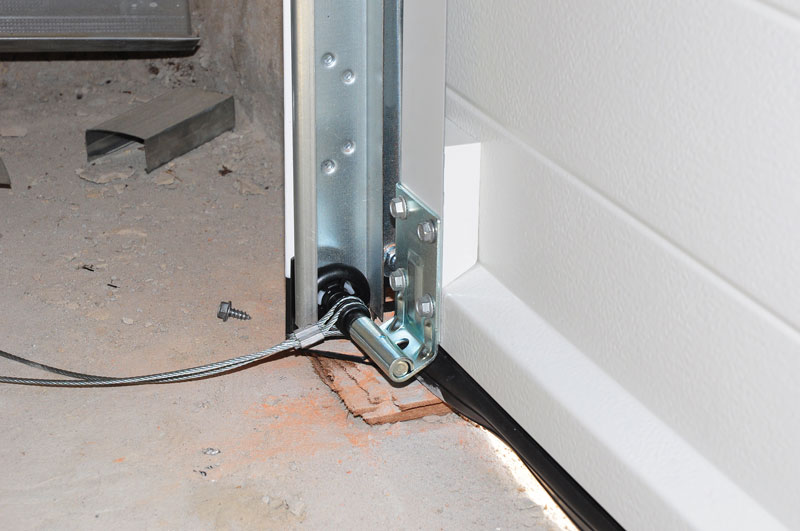Although it the single largest moving part of your home and may take up more than 40 percent of the front-facing portion of your home, you probably don’t give your garage door much thought. Even during the design stage of a new garage door, you pick a color, a panel system, window placement.


Once everything is in place, though, you expect the garage to go up or down when you need it to. Pulling the car in, taking it out, or leaving the door open so you can perform a little Spring cleaning. When something goes wrong with the door, it becomes much more difficult to move the door.
Parts of a Garage Door System
Garage doors today can weigh up to 400 pounds! That’s why it’s so hard to move when something is wrong. Because of this, a garage door system is more than just the door and tracks for it to run on. Extension springs, large torsion springs, cable drums, and garage door cables complete the system.
If anyone of these parts stops working properly or suddenly fails, it could result in the door not moving… or come crashing down! Either way, the door will be out of commission until that part gets repaired or replaced. Some fixes are easy, other garage door repairs will need the attention of an experienced professional.
Each part has a specific purpose. The tracks keep the door aligned, the springs help lift the weight of the door, and the garage door opener lifts the whole thing with a push of the button. The garage door cables and cable drums act as a failsafe in case something happens to the springs.
Garage Door Cable Purpose
These cables – placed on each side of the door – are used with both torsion and extension springs and help move the door up and down smoothly. If one cable breaks, it will add stress on the other, eventually leading it to fail as well.
The cables are attached to the bottom of the garage door and a cable drum at either end of the torsion spring shaft. When the torsion spring turns the drums, the cables wrap or unwrap around the drum, the door lifts or closes. The spring winds up when the doors are lowered and unwind when lowered – helping move the weight of the door.
As we said above, when one of these cables break, the door won’t lift evenly, put a strain on the other cable, tracks, and rollers of the garage door. And although a lot of pressure is found in the torsion spring, and the garage door is very heavy, replacing a cable is relatively safe and easy.
Replacing the Cable
Before removing the broken cable, put the door in the open position and lock the door in place. This can be done by attaching vice grips to the track right below the bottom roller or place a ladder/scaffolding under the door to keep it from moving.
Once the door is safely secured, you can remove the cable from the bottom of the garage door (looped around a peg) as well as the drum (unravel the cable). Affix the new cable to the drum following manufacturer directions, ravel the cable, and loop the other end around the peg at the bottom of the door.
The new cable and old cable may not match exactly, so go ahead and replace both cables to ensure equal lengths. You may also alter the length of either cable, but that involves working with the torsion spring. Unless you have experience with these springs, we recommend giving Ponderosa Garage Doors a call.
We’ve been repairing garage door cables, torsion springs, and every other part of a garage door for more than 16 years around the Clark County area. We perform door installations, repair, and maintenance along with garage door opener installations. Ponderosa Garage Doors works quickly, professionally, and safely to get your up and running again. We look forward to hearing from you.
